Valley of the Temples: Discover Serenity and Spiritual Beauty in Hawaii (updated 2023)
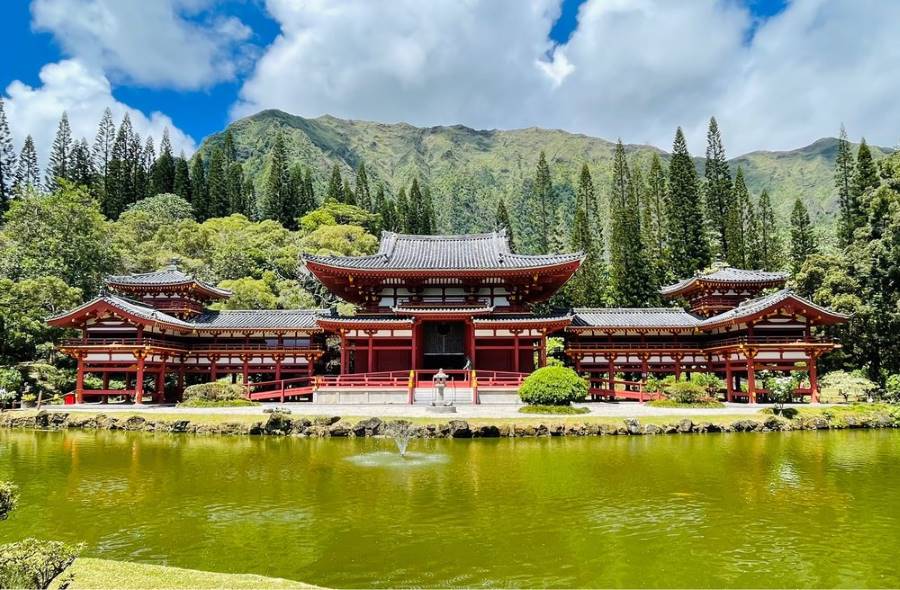
The Valley of the Temples is so serene and quiet, it is almost easy to miss the turnoff here on the eastern coastline Highway to the entrance of the valley. A quiet respite and memorial grounds to various cemeteries, religious temples and historic monuments including the Byodo In Temple at the back of the Valley of the Temples.
As you drive into the lush and green valley entrance, you’ll see the majestic Ko’olau mountain range with the Pali cliffs in the background sometimes shrouded in mist overlooking this peaceful place. On rainy days, you’ll see that the cliffs have dozens of waterfalls that free fall straight into the valley in an exotic and mystical look and vibe.
Located in the Ahuimanu region on the windward side of East Hawaii, this lush valley is the gathering place to various religions to enjoy the peace and beautiful surroundings. The large tract of land is allocated to cemetery space for all religious beliefs and even a cemetery for WWII in the park area.
Where is the Valley of the Temples located?
The Valley of the Temples, a place of deep spiritual significance and serene beauty, is located on the island of Oahu, Hawaii. This tranquil sanctuary is nestled in the town of Kaneohe, on the eastern side of the island. It’s approximately 12 miles (19 kilometers) from downtown Honolulu, making it easily accessible for visitors looking to explore its cultural and natural wonders.
Quick Plan your Honolulu Itinerary
Are you in a rush on a last-minute trip to Honolulu? Well then, try our jump start guide to book the best tours and hotels
below.
Pro Tip – Since you are planning to visit Diamond Head and Waikiki tour here to enjoy with great views and tour of Waikiki Beach.
Top Tours to Try in Honolulu
Complete Pearl Harbor Experience – Day Trip Tour
Grand Circle Island Tour – Top Rated
Sunset Cocktail Cruise – Easy tour with pick up
Where to Stay in Honolulu
Ilima Hotel – Budget Option , Personally tried
Holiday Inn Express Waikiki – mid range
Halepuna Waikiki – Honolulu luxury hotel or resort
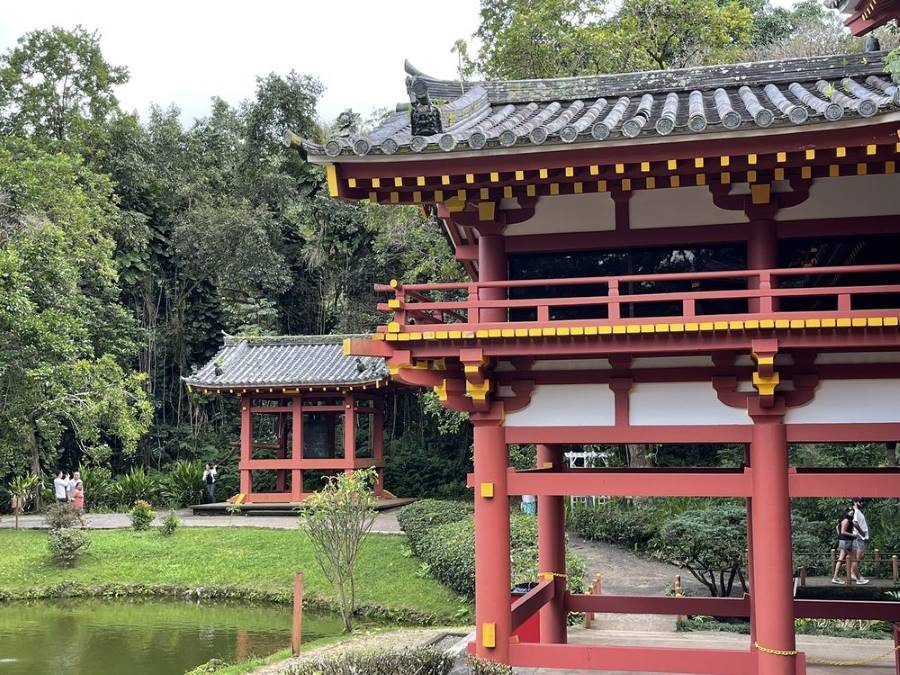
Exploring the Byodo In Temple
One of the most visited attractions in this valley is the Byodo In Temple which in Japanese means “Equal” and in translated to “Temple” or Temple of Equality. The Byodo In Temple is an exact replica of a 950-year-old temple located in Kyoto. The Hawaii temple was created in 1968 to mark the 100th anniversary of Japanese immigrants to Hawaii.
This spiritual center and cemetery are a non-practicing Buddhist temple but does celebrate all religious and non-religious beliefs and all ethnicities.
You drive through a winding road around the cemeteries and eventually arrive at the parking lot to Byodo In Temple. From there you walk through some simple and peace zen like gardens, a rainforest creek and finally see the entire temple in its entirety. Surrounding the temple is a large pond area filled with large Japanese koi fish and some black swans. You can feed the fish with fish food from the temple shop and enjoy this simple and fun activity of feeding the fish.
A brief history about the Byodo In Temple
The Byodo-In Temple in Oahu, Hawaii, is a remarkable place with a rich history and cultural significance and definitely worth a visit in the East side of Oahu. Here’s a brief overview:
- Inspired by a Japanese Landmark: The Byodo-In Temple is a replica of the 950-year-old Byodo-In Temple located in Uji, Japan. It was constructed to commemorate the centennial anniversary of the arrival of Japanese immigrants to Hawaii. This architectural masterpiece faithfully reproduces the original temple’s design, incorporating traditional Japanese architectural elements.
- Dedication and Opening: The temple was officially dedicated on June 7, 1968, and it opened to the public as a non-denominational place of worship and meditation. It welcomes people of all faiths to find serenity and spiritual reflection amidst its tranquil surroundings.
- Location: The Byodo-In Temple is nestled in the Valley of the Temples Memorial Park, a beautifully landscaped area in the Ko’olau Mountains on Oahu’s windward side. Its picturesque setting adds to the temple’s allure, with lush gardens, koi ponds, and the dramatic backdrop of the mountains.
- Architecture: The temple’s architecture is a fine example of Buddhist design, featuring a stunning wooden structure with intricate carvings, a red roof, and a large reflecting pond in front. The main hall houses a nine-foot-tall wooden statue of the Lotus Buddha, a replica of the original Phoenix Hall statue in Japan.
- Peaceful Retreat: The Byodo-In Temple serves as a place for quiet contemplation and meditation. Visitors are welcome to explore the temple grounds, admire the beautiful gardens, feed the koi fish in the pond, and ring the massive bon-sho (sacred bell) for peace and enlightenment.
- Cultural Center: Adjacent to the temple, there is a small museum and gift shop that provides additional insights into Japanese and Buddhist culture. Visitors can learn more about the temple’s history and significance.
- Filming Location: The Byodo-In Temple has been featured in various films and television shows due to its stunning and serene backdrop. It has become an iconic symbol of Hawaii’s cultural diversity.
The Byodo-In Temple in Oahu stands as a testament to the enduring cultural connections between Hawaii and Japan. Its serene beauty, architectural authenticity, and lush surroundings make it a place of both historical significance and spiritual tranquility, welcoming visitors from all over the world to experience its timeless charm.
Directions to the Valley of the Temples
To reach the Valley of the Temples, located in Kaneohe on the island of Oahu, follow these directions:
By Car: If you have access to a car, driving is the most convenient way to reach the Valley of the Temples. From Honolulu, take the H-1 Freeway heading westbound. Take the exit for the Likelike Highway (Route 63) heading towards Kaneohe. Continue on the Likelike Highway until you reach Kahekili Highway (Route 83). Take the Kahekili Highway heading towards Kaneohe and follow the signs for the Valley of the Temples. The entrance to the valley is on the right-hand side.
By Bus: Oahu has an extensive public bus system operated by TheBus. From Honolulu, you can take bus route 55, which runs between Ala Moana Center and the Windward Mall. Inform the bus driver that you want to get off at the Valley of the Temples stop in Kaneohe. Check TheBus website or app for the most up-to-date bus schedules and routes.
By Taxi or Ride-Sharing Services: Taxis and ride-sharing services like Uber and Lyft are readily available on the island. Simply request a ride to the Valley of the Temples, and the driver will take you directly to the entrance. This option offers flexibility and convenience, particularly if you prefer not to drive or navigate public transportation.

The Giant temple bell
The large temple bell sounds off with visitors striking the large bronze bell and visitors cross a small bridge to reach the temple area. The huge bronze bell was casted in Osaka and weighs over 7 tons and is called the Bon Sho or sacred bell. Before entering into the temple, visitors are allowed to strike the bell with a soft wooden stick, imparting a sense of peace, clearing the mind of negative thoughts and blessings for a long and healthy life.
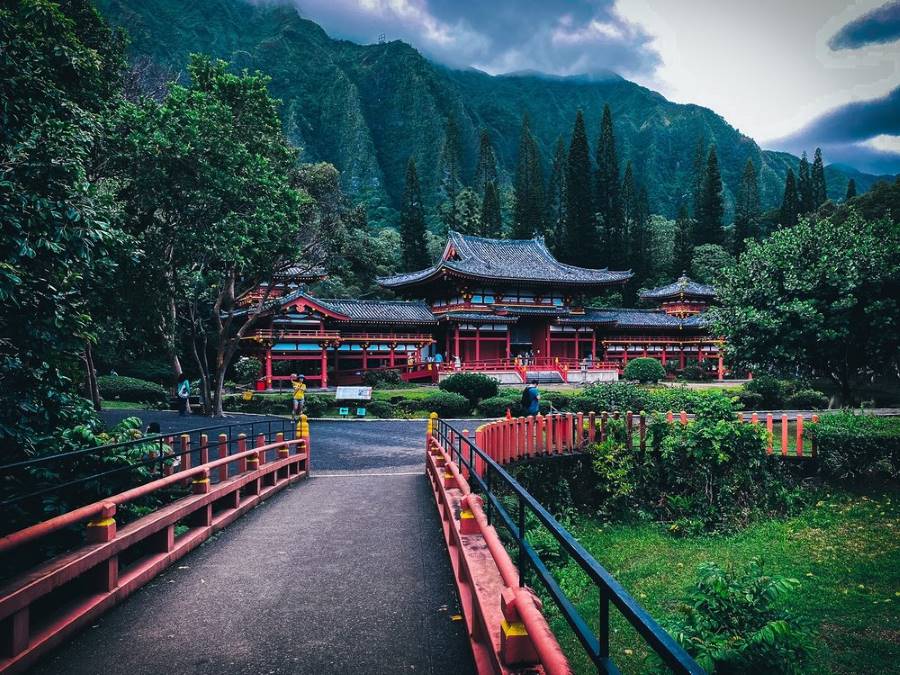
Entering the temple grounds
When you enter the temple do take your shoes off as a sign of respect to entering and immediately you will see the large-scale statue of the Amida Buddha. Made with copper and bronze the Amida is finished in gold leaf but looks regal and refined with a carve oval background with floral patterns and deities mixed into the design motif.
The Amida here represents the infinite life and the light that surrounds all human beings and you can practically feel the mana or spiritual energy of the place while being in a meditative or quiet mode or reverence.
You are allowed to take in as much personal time to sit and meditate in this space and then quietly exit the temple. You can stroll through the rest of the garden with small waterfalls, pagoda and reflecting ponds before you exit the temple grounds.
Unlike the mostly wooden temple structure in Kyoto, Japan, this particular temple was made with cast concrete and simulated wood detail to mimic the tongue and groove structure of the original. Actual wood carvings were done on site and chanted in place before being set in.

Celebrations of life and weddings
The wedding is a popular spot for wedding ceremonies that can be held there and you can inquire with the visitors center for more information.
The temple grounds also have two chapels available and a mortuary help celebrate your love one’s celebration of life in this peaceful and beautiful environment along with dining in services.
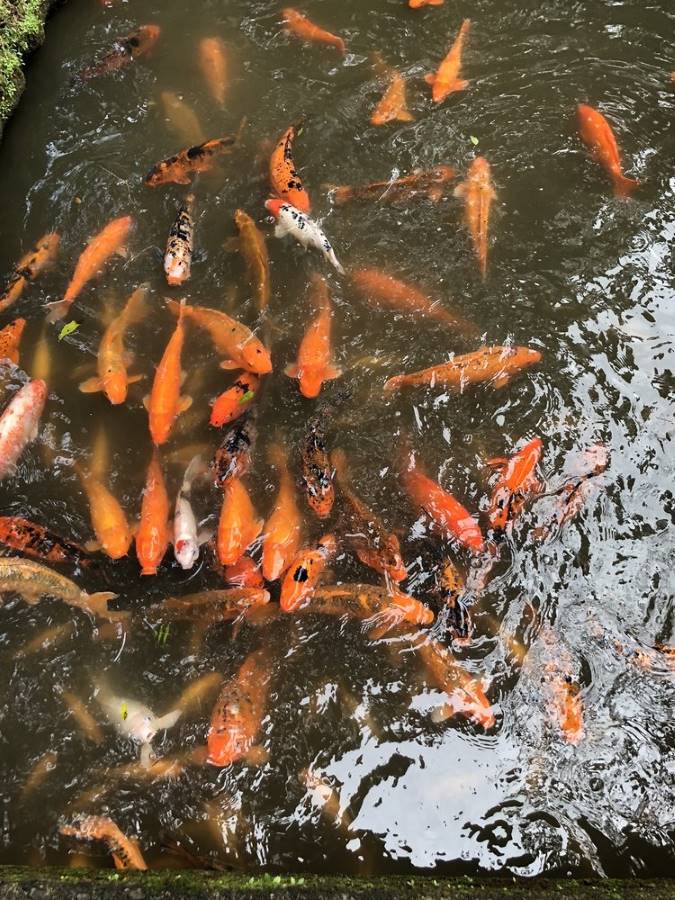
Detail to the Byodo In visiting hours
Temple grounds are open from 8:30am to 5:00 pm daily with the last entrance allowed in at 4:45.
General admission to the temple as follows:
Adults $5 (age 13-64)
Seniors $4 (65+)
Children $2 (2-12 years)
There are guided tours of the temple grounds and you can contact the shop to inquire to a tour
at 808-239-9844.
Check their main website here for more information and details for visiting or services that you may need at the Byodo In Temple.
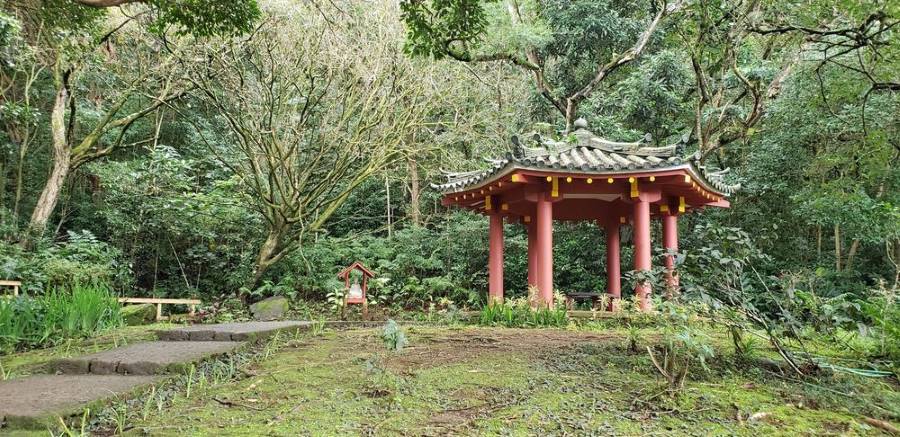
Explore the outdoor gardens
The outdoor gardens at the Valley of the Temples are a serene oasis with lush greenery, koi ponds, sculptures, and water features. The well-maintained walkways guide visitors through the tranquil surroundings, offering opportunities for meditation and relaxation. It’s a picturesque setting that enhances the spiritual atmosphere of the site.
Other things to see in immediate the area
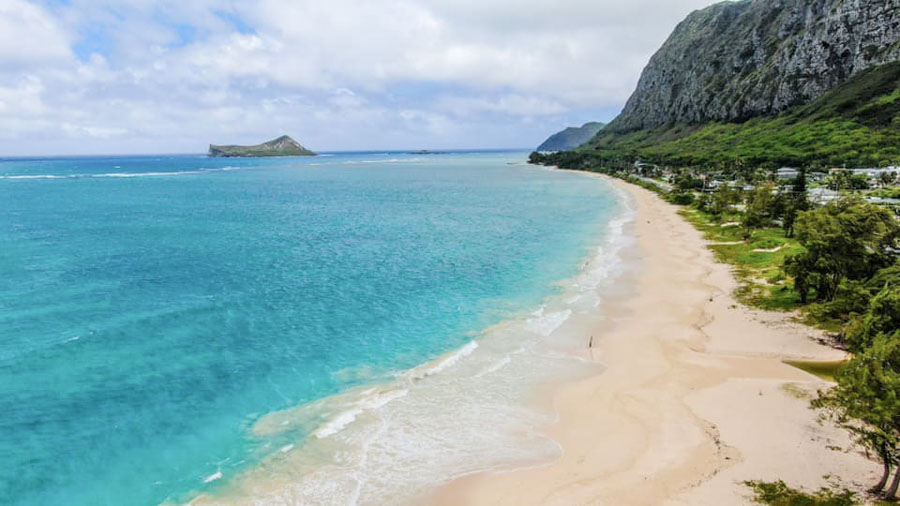
Waimanalo Beach area
Beautiful Waimanalo beach is the perfect beach to enjoy a fun beach day on the east side of the island. With calm water and waves it is easy to enjoy the beach and aqua colored ocean and do some fun swimming, snorkeling or adventure sports on the water.
Check out a visit to Waimanalo Beach area for more inspiration and images.

Explore Kailua on the East side of Oahu
If you are looking for fun and cool on the east side of the island, then head out to Kailua. With hip galleries and shops, delicious eateries, coffee shops and brew pubs, you can enjoy the small town vibe here. Kailua also has a gorgeous beach to spend a fabulous day swimming, lounging or doing some fun water sports in the ocean.
Check out the Top things to do in Kailua for more inspiration and images to visiting.
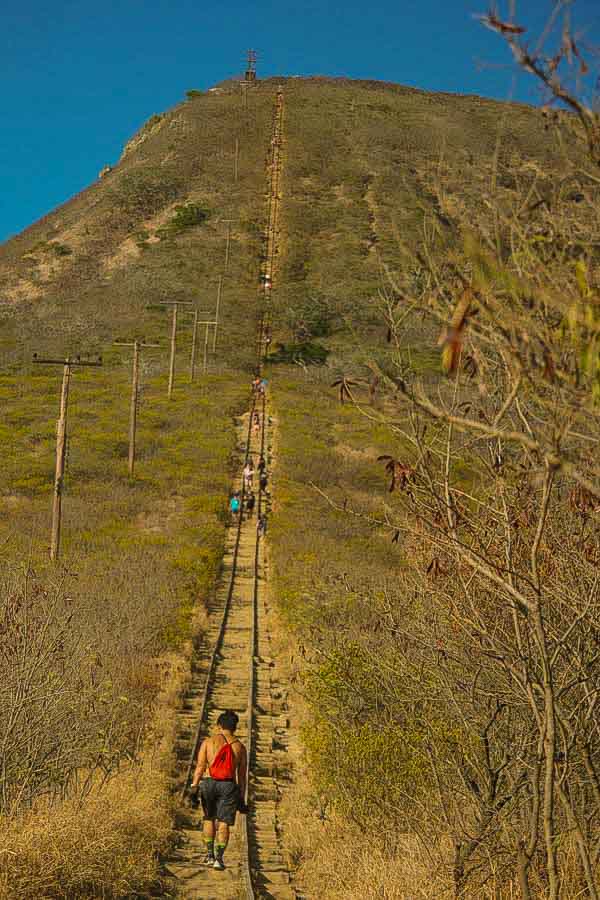
Push yourself to doing the Koko Head trail
If you want a perfect combination of workout and spectacular views, you’ll have to do the Koko Head trail challenge. Here at the base, you’ll climb wooden trestles up over 1000 steps to the top of the rim with spectacular views below of the Koko Head area and East Hawaii along with gorgeous Hanauma Bay in right below.
Check out this Visit to Koko Head trail for more information and images to visiting.
Pin this for later
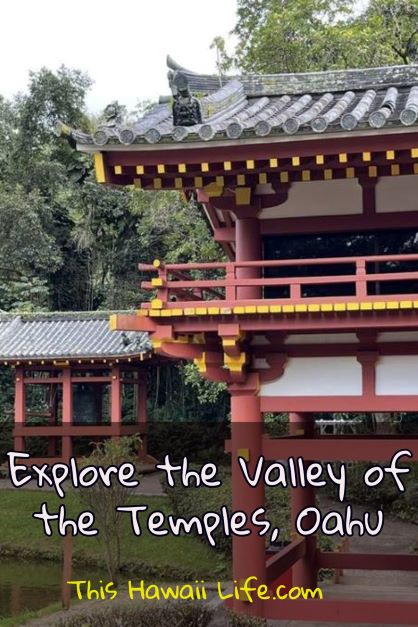

Weather and best time to visit Oahu
Oahu island is a popular destination known for its stunning beaches, vibrant culture, and pleasant weather. The best time to visit Honolulu depends on your preferences for weather, crowds, and activities. Here’s an overview of Honolulu’s weather and the ideal times to plan your trip:
Weather Overview:
- Year-Round Tropical Climate: Honolulu enjoys a tropical climate, characterized by warm temperatures and high humidity throughout the year. The weather is generally pleasant, but there are some variations to consider.
- Summer (June to August): Summers in Honolulu are warm and dry, with daytime temperatures ranging from 80°F to 90°F (27°C to 32°C). This is the peak tourist season, with many visitors coming to enjoy the beaches and outdoor activities. Be prepared for higher accommodation prices and larger crowds.
- Fall (September to November): Fall is a lovely time to visit Honolulu. Temperatures remain warm, with highs between 80°F and 88°F (27°C to 31°C). Rainfall starts to increase slightly, but it’s still a great season for outdoor exploration. Crowds begin to thin out compared to the summer months.
- Winter (December to February): Winters in Honolulu are mild, with temperatures ranging from 70°F to 80°F (21°C to 27°C). These months are the rainiest on average, but the rain typically comes in short, heavy showers. While there are still plenty of sunny days, it’s advisable to check the weather forecast. Winter is an excellent time for whale watching, as humpback whales migrate to Hawaiian waters.
- Spring (March to May): Spring weather is similar to fall, with pleasant temperatures between 75°F and 82°F (24°C to 28°C). Rainfall starts to decrease, and the island becomes lush and green. This is a great time to visit Honolulu, as the weather is comfortable, and the crowds are relatively smaller than in the summer.
Best Times to Visit Honolulu:
- Fall (September to November) and Spring (March to May): These transitional seasons offer the best balance of pleasant weather and fewer crowds in Honolulu. The beaches and outdoor activities are enjoyable during these times.
- Winter (December to February): While it’s the rainiest season, Honolulu’s mild winter weather still makes it a desirable destination. If you’re interested in whale watching or cultural events, this might be the time for you.
- Summer (June to August): Summer is the peak tourist season in Honolulu. If you don’t mind the larger crowds and slightly higher prices, it’s still a great time to visit for beach activities and water sports.
Additional Tips:
- Consider booking accommodations and activities in advance, especially if you plan to visit during the peak summer season.
- Honolulu offers a wide range of cultural events, festivals, and outdoor adventures year-round. Check the local event calendar for activities that align with your travel dates.
- Don’t forget to wear sunscreen, drink plenty of water, and stay hydrated, as the Hawaiian sun can be strong.
In conclusion, Honolulu is a fantastic destination with pleasant weather year-round. The best time to visit depends on your preferences for weather and crowd levels, so choose the season that aligns with your interests and priorities for your Hawaiian vacation.
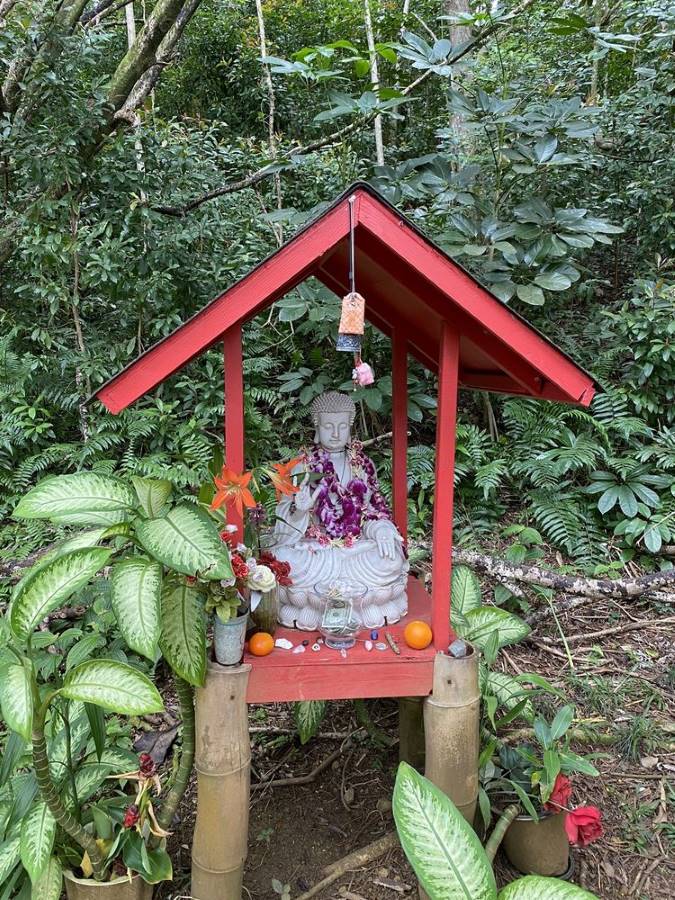
Final thoughts to visiting?
Enjoyed your visit here or any other tips to share? Please share on the comments below.
Conclusion on visiting the Valley of the Temples
In conclusion, visiting the Valley of the Temples in Hawaii is a profound and awe-inspiring experience that offers a glimpse into the rich cultural and spiritual heritage of the islands. Nestled in the serene and picturesque landscapes of Kaneohe, this sacred site is a testament to the beauty of human devotion and architectural craftsmanship.
Thanks for checking out this post on visiting the Valley of the Temples. Hope the post was informative and a must read article – if so please do share it with any of the social media buttons around the page.
Disclosure – This article and related articles may have some affiliate links. This means that
we earn a commission from quaified purchases and bookings at no additional costs
to you. Thank you for supporting the site, if you do.


0 Comments
Trackbacks/Pingbacks